History of Computers
You might think just like there were no computers available in ancient times, no people can know about computers, but at that time, they had to calculate and compute by counting other daily uses such as sticks, stones, bones, and many more. They were nothing known about computers and electronic gadgets. As technology improves day by day, people also use advanced technology, which leads to better, fast, and more efficient.
List of the popular computing devices were developed in recent times, such as Abacus, Napier’s bones, Paschalis’s, etc.
Abacus
“Abacus “was the main founder of initial stage of computers, which considered the first computer. It is invented 4000 years ago by a Chinese scientist.
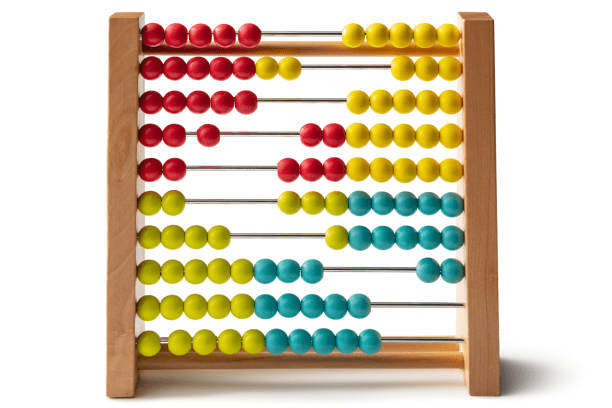
Abacus is a wooden rack with metal rods, and each rod contains beads that are mounted on them. Today it is also used in countries like China, Russia, and Japan. As the abacus operator, people move the beads, and arithmetic calculations perform whatever they want to count. An image simple of these tools is below.
Napier Bones
It was basically used for computing and calculating device. They use those numbers to mark and count anything whenever they want to calculate anything like addition, multiply, subtraction, and divide. A simple image of Napier Bones showing below.
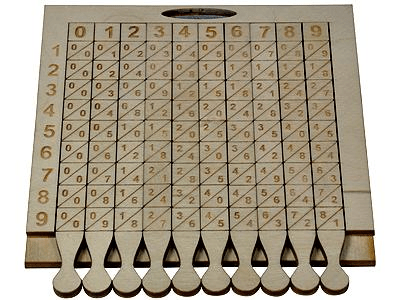
Pascalines
Pascaline was widely used in ancient times. The main founder was mathematician- philosopher “Blasé Pascal” in 1642 and 1644. Pascal helped to father, who was working as a tax accountant, by using Pascalines to calculate tax-related work. The main basic purpose of this could perform quick calculations such as addition, subtractions, etc.,
When we consider its structure, it was a wooden box with a series and wheels. When rotating wheels and completing one revolution, then another neighboring wheel also rotates, and so on, it continues for another wheel. They got a series of windows given on the top of the wheels for doing this. And last, they calculate the total wheels working.
A simple image of Pascalines showing as below.
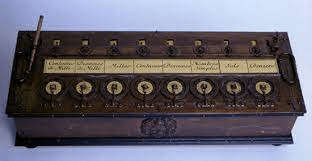
Stepped Reckoner or Leibniz wheel
It was invented by a German mathematician – philosopher "Gottfried Leibniz" in 1673. It was made up of fluted drums instead of gears and wheels.
Difference Engine
Charles Babbage discovered the Difference Engine in early 1820 for the first time. Difference Engine is the first machine that uses logarithmic tables to solve the table of numbers. We can say that it is a mechanical computer capable of performing simple calculations. “steam-driven” calculating machine is main motto of this type of computer
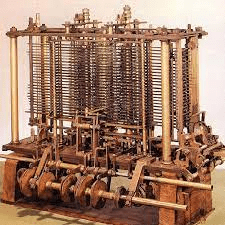
Analytical Engine
It was developed in 1830 by Charles Babbage. In this type of machine they used punch cards. The main important advantage of this, it stores information as a permanent memory.
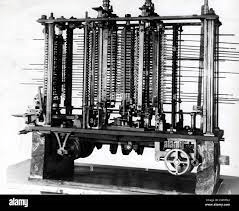
Tabulating machine
For storing tabulating statistics data or records, they used tabulating machines. This type of computing machine also used punch cards. It was discovered by "Herman Hollerith", an American statistician scientist, in 1890. A mechanical tabulator was wok based on punched cards in this machine.
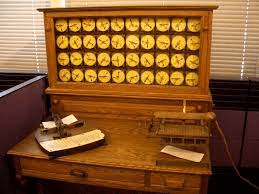
Differential Analyzer
The differential analyzer computer was the first electronic computer. Vannevar Bush discovered it in the year 1930 in the United States. Vacuum tubes are used to generate electrical signal.
Mark 1
In the year 1937, the next major changes begin in the history of computers. It was developed by “Aiken”. The main motto of this machine was to develop; it could perform large calculations containing large numbers.
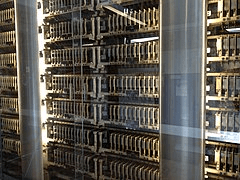
Generations of Computer
Generation of a computer refers to improving and enhancing computer technology with time. With the increasing day-by-day technology, people will also correlate with these new technologies efficiently. Today, you are seeing all universes became in digital format.
Initially, computer technology features were growing only in the case of hardware, but you can see that computer is enhancing with both hardware and software changes, and combining these two forms a called digital computer.
Each new generation of computers brings new technology as time changes. First of all, in 1946, a chip circuit was developed to perform the counting. At that time, it replaced tools such as gears, wheels, and many more mechanical parts. It increases the computer speed, performance, memory, and so many features are added.
There are five types of generations of a computer that exist now, which are described below-
First Generation computer
The first generations of computers (1946 - 1956) were very slow in speed, expensive in nature, very big, etc. In this phase, the computer used a large no of vacuum tubes, The main thing is that it generates heat. Magnetic tapes were used for input and output. They consumed large electricity, so it was very expensive to use. The instructions were written in machine language.
List of the all popular examples of first-generation computers areas –
- ENIAC (Electronic Numerical Integrator and Computer)
- UNIVAC (Universal Atomic Computer)
- IBM-701
- IBM-650
- EDVAC (Electronic Discrete Variable Automatic Computer)
Advantages of First-Generation Computer
- Vacuum tubes are essential parts, which are used for electronic components.
- The first-time electronic computer was developed.
- Computations were performed in a millisecond.
Disadvantages of First-Generation Computer
- Not portable
- Too much large.
- Limited commercial use.
- They generate large amount of heat.
Second Generation computer
The second generation of computers also generated heat, but very less than the first generation of computers. The period (1956-1963) is known as the second generation of computers.
This phase of computers mainly used transistors. Compared to vacuum tubes of first-generation computers, transistors are smaller, have faster speed, efficient operation, and are reliable. For primary memory this generation used magnetic core, and magnetic tapes and disks were used for secondary memory.
For writing code and instructions, so they used as assembly language program. It uses mnemonics like ADD for addition, SUB for subtraction, etc. It uses simple English keywords; that's why writing code in assembly language was easier than writing code in machine language.
Assembly languages like COBOL and FORTRAN were used for writing instructions.
Some of the most popular examples of computers areas
- IBM 1620
- IBM 7094
- CDC 1604
- CDC 3600
- PDP 8
Advantages of Second Generation of computer
- Could be used for commercial purposes
- Smaller in size
- Less heat generation
- Computations were performed in a microsecond
- Less hardware and maintenance problems.
- Much more reliable compared to the first generation of computers.
Disadvantages of Second Generation of Computer
- More costly for commercial purposes.
- Required more maintains
- Cooling is also required.
Third Generation of Computer
In this generation of computer integrated circuit (IC) chips are used for making computer. These IC chips contain many more no of transistors. That means multiple transistors are placed in a single silicon chip. Using IC chips increased the speed and the efficiency of the computer. For the first time, the keyboards and mice were used to give input to the computers. It used time-sharing multiprogramming as an operating system. A high-level programming language such as FORTRON-II, COBOL PASCAL, and PL/1 was used.
List of following popular examples of third-generation computers are –
- IBM – 360 series.
- PDP (Personal Data Processor)
- TDC-316
- Honeywell -6000 series
Fourth Generation Computer
The year (1971-to 1980) is known as the second generation of computers. First-time microprocessors were used in this phase of computers.
They generate much lesser heat and require less maintenance than the previous generation of computers.
If we talk about in case of hardware technology, they use the Large Scale Integration (LSI) and Very Large Scale Integration (VLSI) technology. VLSI contains millions of transistors and other chip circuits.
This generation of computers supports Time-Sharing and distributed operating systems. Several new operating systems were developed, such as MS-DOS MS- WINDOWS.
The programming languages such as C, C++, etc., also developed in this generation.
Some of the most popular fourth generations of computers are –
- STAR 1000
- PDP 11
- CRAY-1
- CRAY-X-MP
Fifth Generation Computer
The main purpose of fifth-generation computing is to develop computers so that they are capable of learning and self-organization.
From 1980 to date, fifth-generation computers have been used. This generation of computer fully depends upon Artificial Intelligence and Machine Learning
Some of the popular fifth generations of computers are
- Desktop
- Laptop
- Notebook
- Chromebook
- UltraBook